
Book Review | Thrawn: Alliances & Thrawn: Treason
Author: Timothy Zahn
Publisher: Del Rey
Length: 342, 334 pages
EE Critic Score: 8/10
A couple of summers ago, I reviewed Thrawn, a book by Timothy Zahn that brought Zahn’s classic character Mitth’raw’nuruodo into the new Star Wars canon. The next summer I read Zahn’s sequel, Thrawn: Alliances, and now I’ve just gotten done reading Thrawn: Treason, the third in the trilogy. Since I didn’t review Alliances when I first read it, I’ll take a look at both sequels together now.
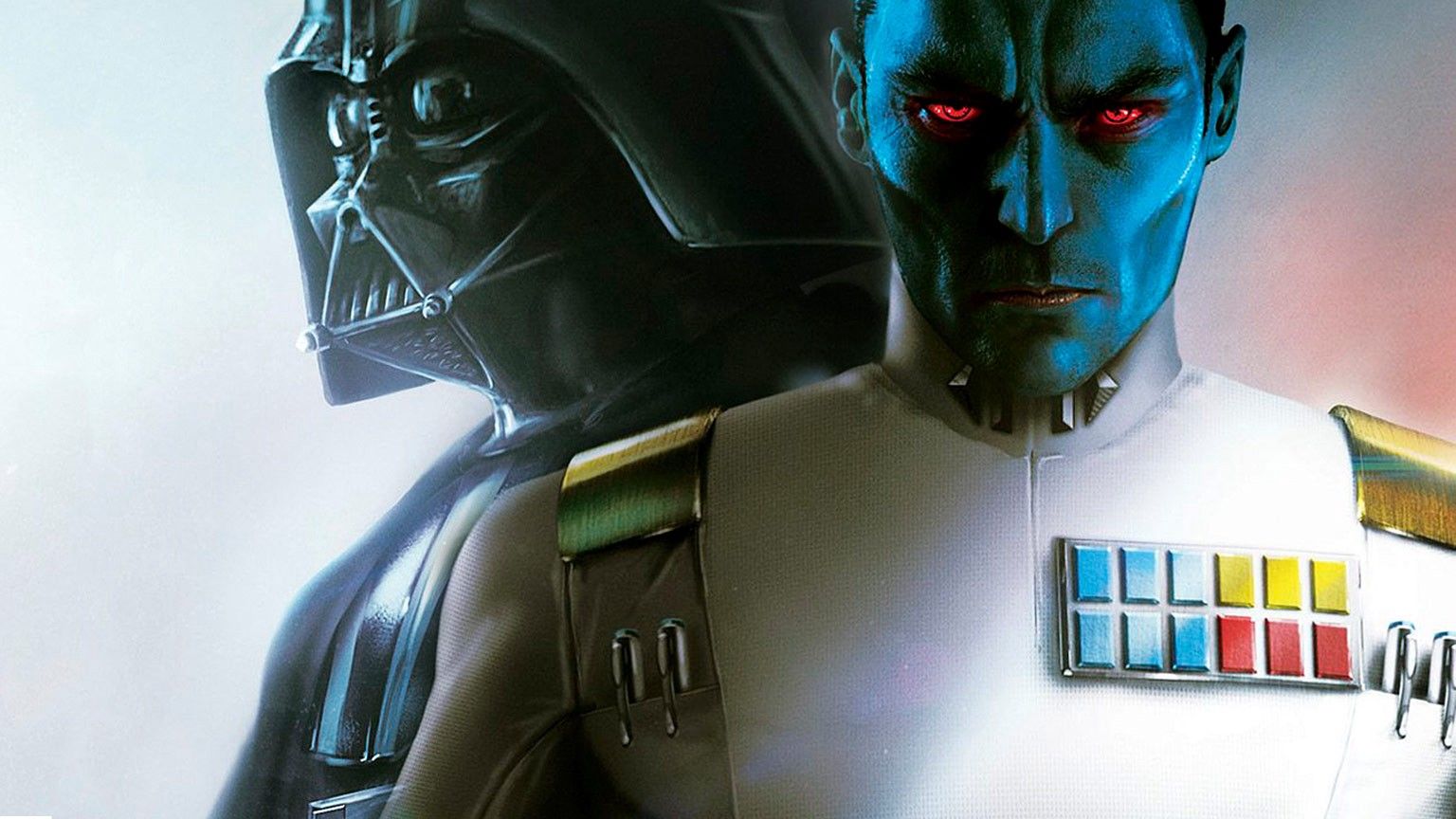
Synopsis
Thrawn: Alliances
This book was the long-awaited team-up between Grand Admiral Thrawn and Darth Vader. The narrative is divided between “Then” and “Now”. Then is the later years of the Clone Wars. Now is just after the Battle of Atollon (the Season 3 finale of Star Wars: Rebels). Thrawn and Anakin Skywalker/Darth Vader are the key characters in both storylines.
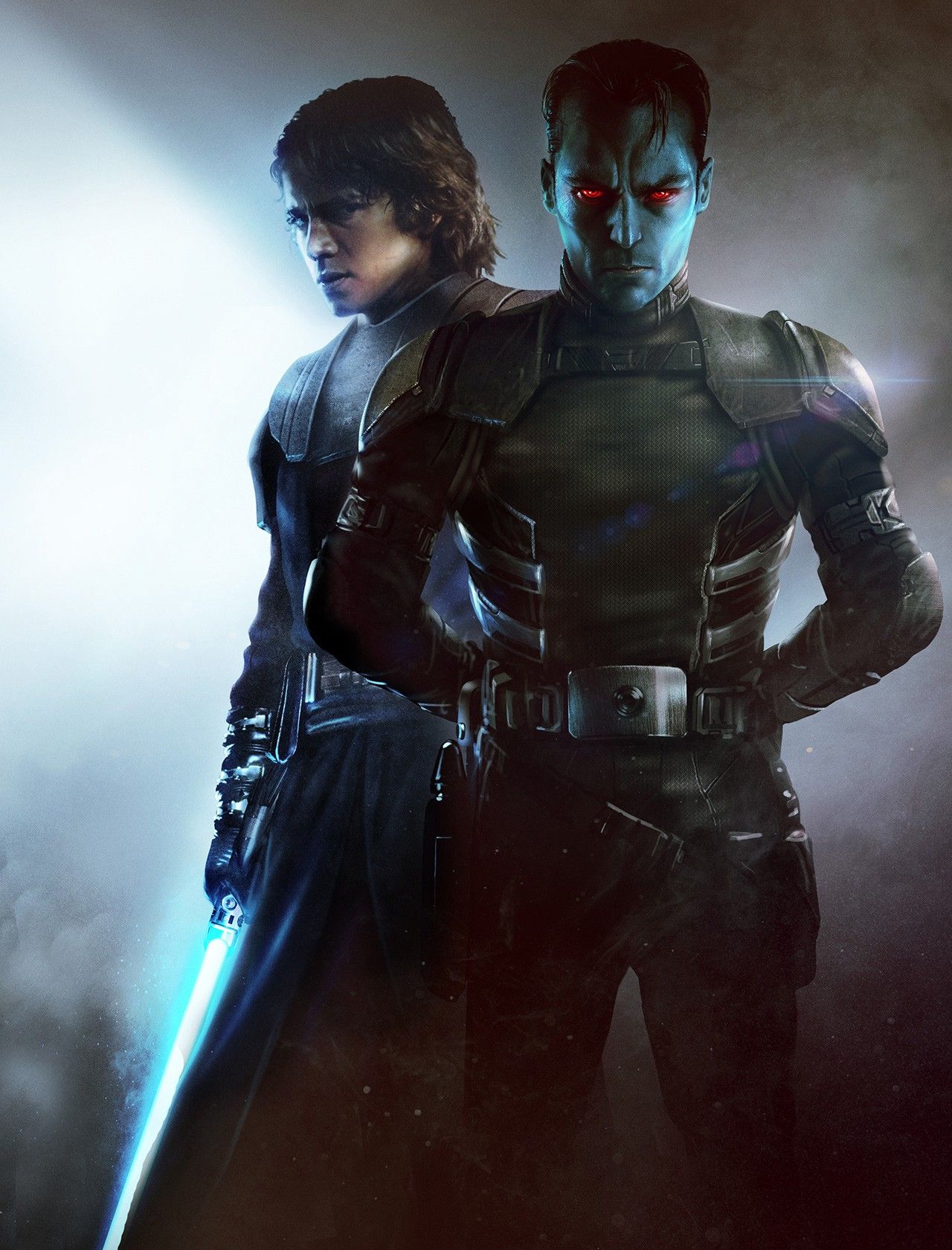
In the “Then” storyline, Anakin Skywalker encounters Chiss Defense Fleet Commander Mitth’raw’nuruodo while on a mission to find Senator Padme Amidala. She had gone missing during a diplomatic mission to Batuu, an Outer Rim world near Chiss Space. Not having his usual company of clone troopers to support him, Skywalker agrees to fill Thrawn in on the Clone Wars in return for his aid in the frontier region.
Skywalker and Thrawn find evidence of a Separatist cell on Batuu. Their investigation yields that Amidala had found her contact murdered after learning of a Separatist facility hidden on the nearby world of Mokjiv.
Amidala had been shot down over Mokjiv, though she had evaded capture by the Separatists with the aid of several former workers at a mine the Separatists had recently seized control of. Amidala and the workers witness Skywalker and Thrawn arriving and being captured, and mount a rescue mission of their own.
Once they are reunited, Amidala and Skywalker learn that the facility is being run by a Serrenian duke, one of Count Dooku’s people. The mine is a source of cortosis, a fibrous mineral capable of absorbing and dissipating great deals of energy. Thrawn reveals that stealing the Separatists’ shield generator was his primary mission, and leaves upon doing so.
Skywalker and Amidala discover that the factory is producing prototype B2 battle droids with cortosis-alloy armor capable of nullifying blaster fire and even lightsaber strikes. Curiously enough, the factory is also producing clone trooper armor with similar properties. Recognizing the threat it poses to the Republic, they work together to destroy the facility.
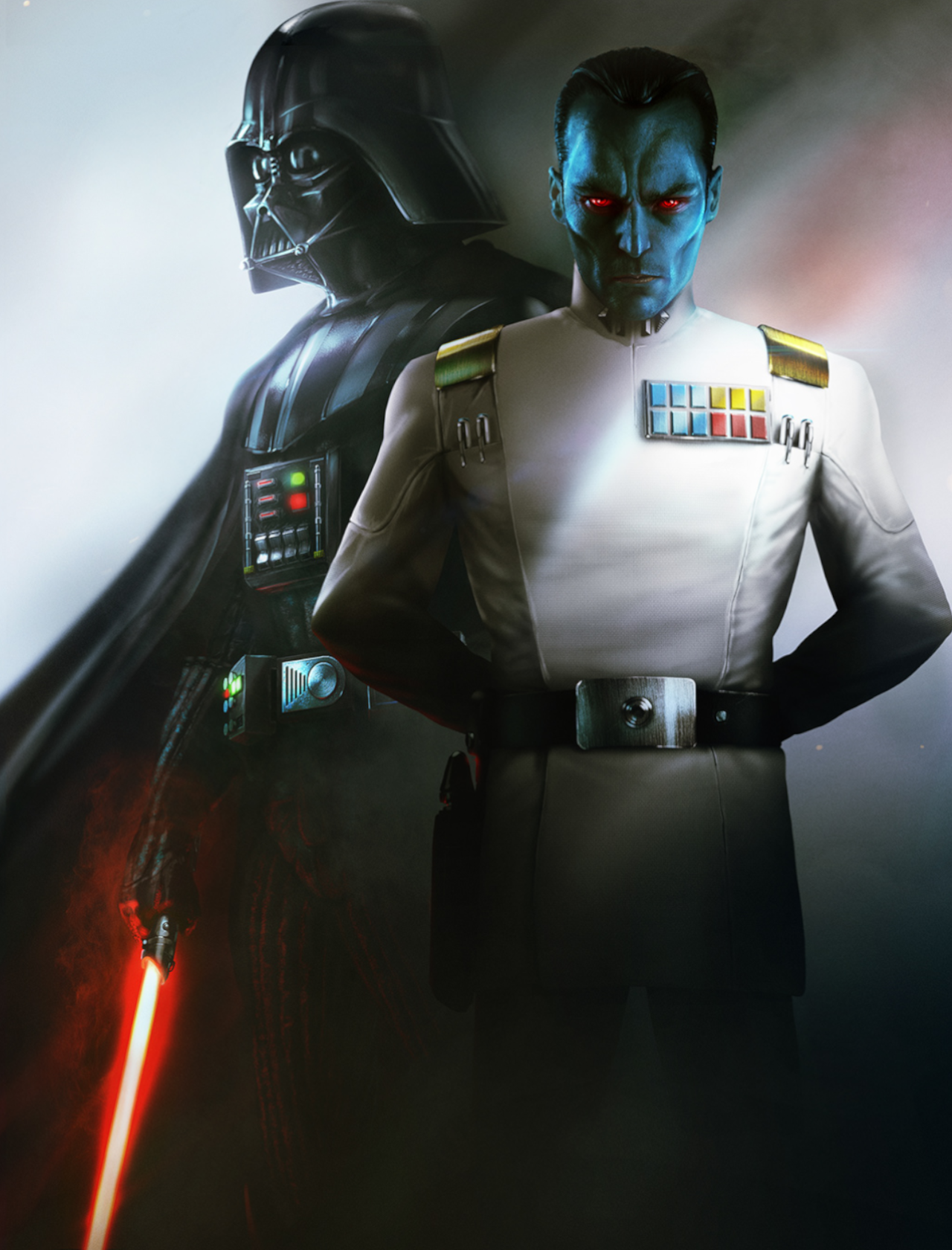
In the “now” storyline, Thrawn is recalled from Lothal to be given a special assignment from Emperor Palpatine himself: He and Darth Vader are sent to Batuu to investigate a disturbance in the Force. Their route takes them past Mokjiv. Thrawn notes that the world had been devastated by some catastrophe and that the moons about it were out of alignment. Thrawn wishes to investigate, but Vader insists on moving on to Batuu.
There they find signs of Grysks, a conquering people Thrawn had heard stories of, but never had actually encountered. The Grysks had already overtaken many other worlds in the Unknown Regions, and seemed to be testing the waters on Batuu. Thrawn and Vader clash with members of a Grysk client species, who were installing mysterious cylinders, evidently part of some sort of navigation array. Vader senses that the cylinders are holding some Force-sensitive lifeforms, whose distress is the source of the disturbance. Thrawn becomes very concerned with recovering these prisoners.
Tensions build between Thrawn and Vader. Thrawn’s recalling of his time spent with hero-of-the-Republic Anakin Skywalker is met with irritation from the Dark Lord. Thrawn’s commanders argue with Vader’s stormtroopers aboard Thrawn’s flagship, the Chimera. And Vader grows increasingly impatient for Thrawn to lay out why he is so concerned with recovering the cylinders. Thrawn deflects Vader’s inquiries, saying that the Grysks represent a threat to the Empire, and that, if the Emperor can trust Thrawn, then so can Vader.
After several skirmishes in which the Grysks escape, the Imperials track them back to Mokjiv, where the derelict Separatist factory had been repurposed as a Grysk field base. The prisoners, two of whom are recovered, turn out to be young Chiss girls. After the battle, Vader confronts Thrawn, asking why the Grand Admiral had hidden the fact that Chiss could be Force-sensitive. Thrawn says that Chiss Force-sensitivity isn’t like that of many species in the main Galaxy; It only rarely manifests in girls, who lose it as they reach adulthood, and it is limited in scope to aiding in navigation through the twisted labyrinth of hyperspace. These child-navigators (Called “Ozyly-esehembo”, or “Sky-walkers”) are vital to Chiss space travel, and are kept a secret from other species. That the Grysks know about them means that they are far closer to an open conquest of the Chiss Ascendancy.
Vader is initially unwilling to dedicate Imperial resources to defending the Chiss from the Grysks. Thrawn claims to have proof that the Grysks are a threat to both the Ascendancy and the Empire, but he says that he cannot delay in pursuing the Grysks further into uncharted space. He once again persuades Vader to trust his judgment and his loyalty to the Empire, though Vader says that he will expect Thrawn to cut Imperial losses if the battle goes poorly.
Thrawn guides Vader in the Ozyly-esehembo techniques, the powerful Sith lord being stronger in the Force and thus more adept at foreseeing the obstacles in the Chimera’s path through the stars, despite having less formal training. He tracks the Grysks to an uninhabited system, where they seem not to have a grounded base, only a crowd of their warships. The Imperials succeed in retaking the Chiss navigators, and the Grysks scatter.
Once the battle is over, Thrawn and Vader speak once again. Thrawn shows Vader a captured piece of Grysk technology, made of cortosis. He recounts how he had suggested that the Separatists would use their cortosis clone armor to infiltrate the Republic, saying that he now believes that this ploy had been developed not by Count Dooku, but by the Grysks, who had been planning to overthrow the Empire since before the Empire even existed.
As he delivers his warning to the Grysks to leave the region, Thrawn uses his full Chiss name. Vader notes this, and Thrawn explains that the Grysks will retaliate against the Ascendancy, not the Empire.
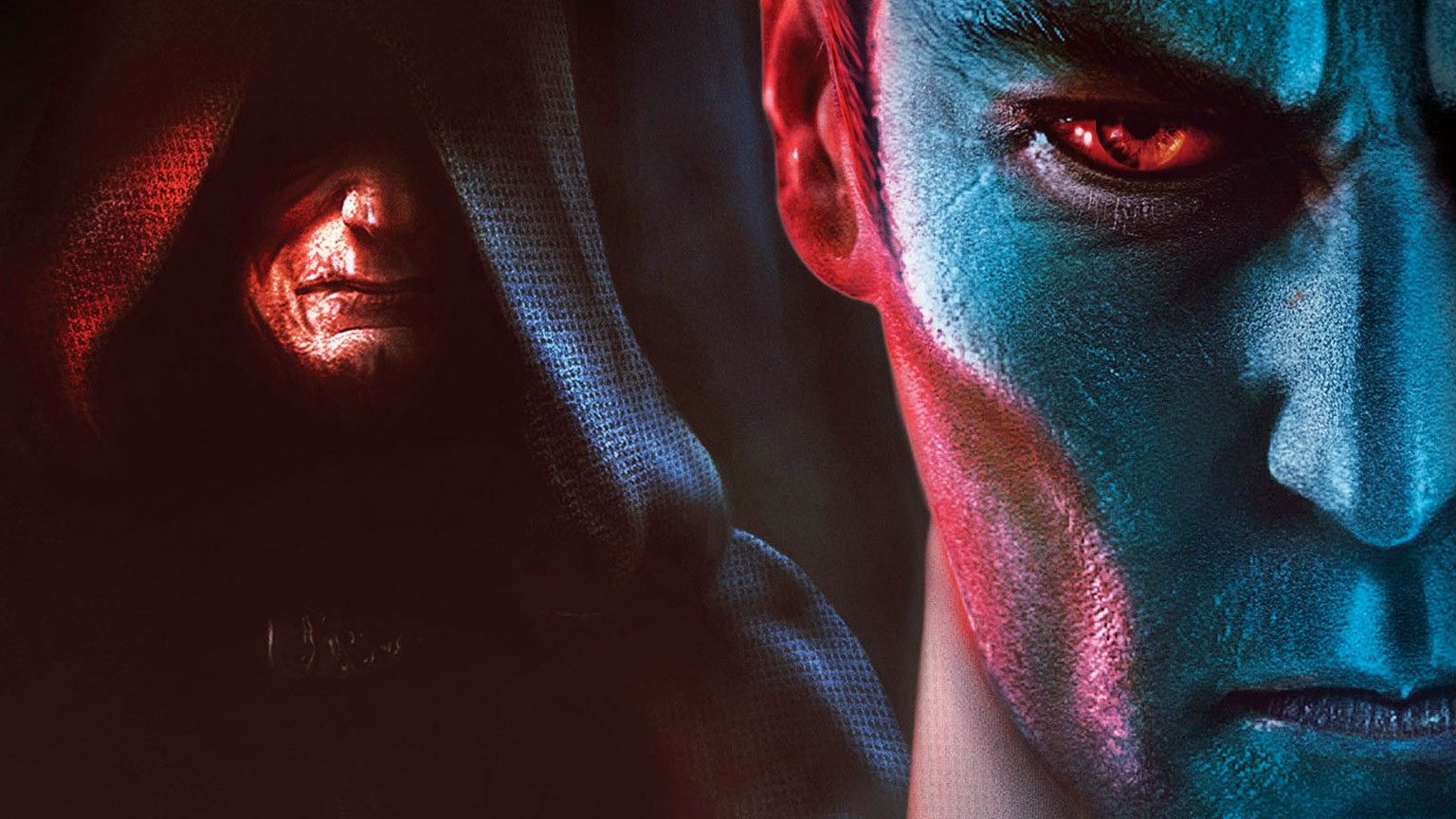
Thrawn: Treason
Again following a round of defeats at the hands of the rebels at Lothal, Thrawn is told by Grand Moff Tarkin that, due to budget overruns in both projects, the Emperor is planning to divert funds marked for Thrawn’s TIE Defender project to Orson Krennic’s Project Stardust. Krennic agrees to allow Thrawn a shot at saving his funding: a key point of Krennic’s supply chain is under attack by space-bound creatures known as grallocs, and if Thrawn can figure out a way to protect the supply, he will have aided Project Stardust sufficiently to offset their need for the Defender project’s money.
Thrawn accepts the challenge, though Krennic additionally insists that a Stardust representative be sent along to keep Thrawn honest. In actuality, Krennic wants to ensure that Thrawn gets rid of the grallocs, but only after his week is up, thus solving his supply problems and ensuring better funding both at once. He tasks Assistant Director Brierly Ronan with the job of keeping Thrawn engaged at his task, banking on Thrawn’s reputation for never giving up on a tactical issue to keep him working against the grallocs past the deadline.
Ronan’s mission goes sideways when Thrawn uncovers a plot to steal weapons components, for which the grallocs were a cover. They follow a freighter, which supposedly had been sent to hyperspace by a gralloc attack to its drive systems, and find it had gone to a smuggler’s deep space station, though a third party had since attacked and looted the station. Further investigation leads Thrawn to discovering that the Grysks were behind the station’s destruction. Thrawn’s flagship, the Chimera, arrives in the middle of a battle between Grysk and Chiss ships. Following the battle, the Imperials recover two Grysks, whom they take prisoner, as well as several slaves, including Un’hee, a young Chiss sky-walker.
The Chiss ship is the Steadfast, helmed by Admiral Ar’alani, Thrawn’s former commander. Also aboard is Eli Vanto, an Imperial officer deployed by Thrawn as a liason to the Chiss. Thrawn invites Ar’alani and Vanto aboard the Chimera, and the two forces agree to work together against the Grysks. Ronan is against the alliance, as he sees Vanto as a deserter and Thrawn as a foreign double-agent, though, as non-military personnel, Ronan is unable to do much to stop it. He does observe Un’hee interacting with the Steadfast’s navigator, Vah’nya, and believes the Chiss are harboring Jedi.
With the Grysks driven off, Thrawn continues to investigate the stolen Death Star components. He finds that the freighters supposedly destroyed by Grallocs had come from the sector ruled by Moff Haveland, who had lobbied Krennic strongly to route his supply chain through her territory. Thrawn assigns Ronan, Vanto, and a pair of Krennic’s death troopers to investigate in the Aloxor systems, one of the points of origin for the stolen freighters. Ronan doesn’t want to leave Thrawn, but Thrawn convinces him that the actions Krennic will want a report on will be those taken by Vanto, at this time.
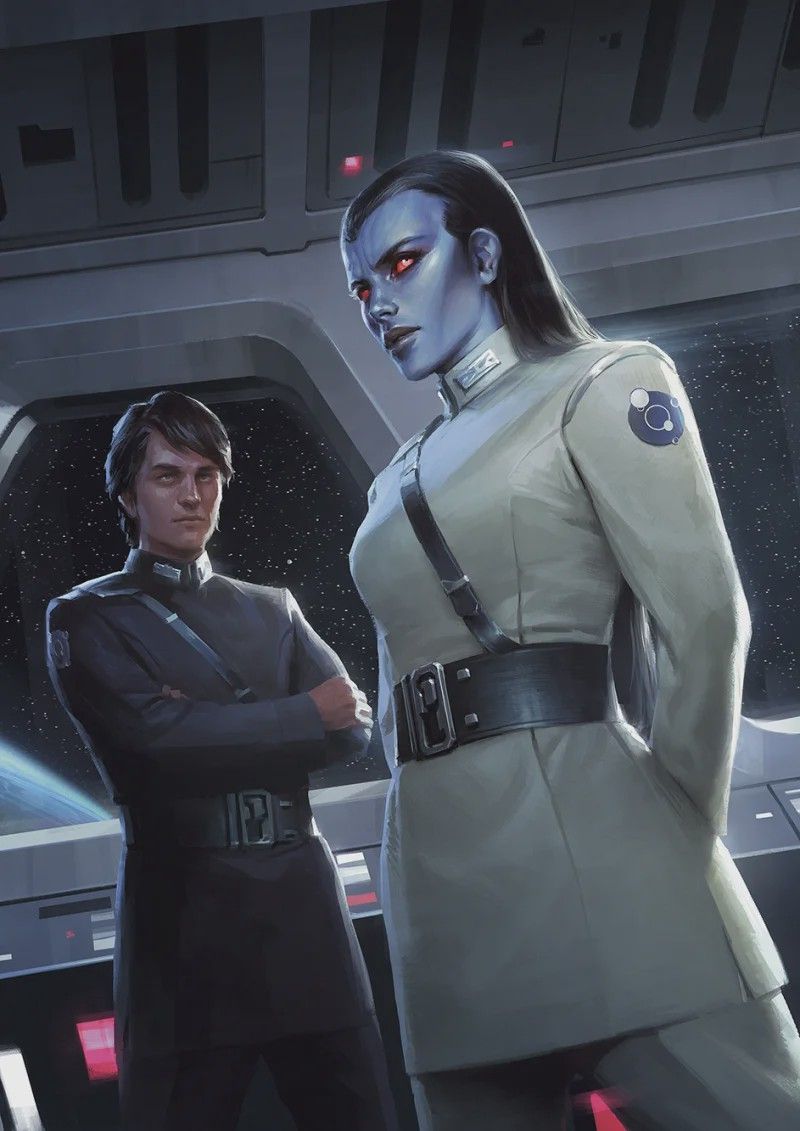
Vanto doesn’t trust any of the Imperial forces on Aloxor, as it appears that Governor Haveland herself may be behind the supply thefts. Instead, they pose as agents of the Hutts. They are attacked by a street gang, though Eli is able to make a truce. They learn from the gang that Thrawn’s peer, Grand Admiral Balanhai Savit, is the one behind the smuggling on Aloxor. Eli says that the Hutts wish to ally with Savit, though the gang is suspicious.
The gang leader dispels the ruse when she asks to see the tattoos the four would have if they were truly Hutt agents. Before Vanto, Ronan, and the death troopers can respond, they are saved by an Imperial Security Bureau officer who had been acting as a mole within the Aloxor underworld. Ronan decides to take the opportunity to leave Vanto behind. The spy leads Ronan to a smuggling ship, which they use to leave the world. They are soon captured by one of Haveland’s Star Destroyers as part of a random security sweep.
Meanwhile, Thrawn, Ar’alani, and Thrawn’s right-hand woman, Commodore Karyn Faro, pursue more leads into Grysk activity at the edges of Imperial space. They find a pair of Grysk ships, though Faro deduces that a third ship is cloaked nearby. Cautious that the first two ships are traps, Thrawn draws out the third ship and destroys it. Stormtroopers are sent aboard the remaining ships, where they catch the Grysks by surprise and rescue more enslaved crew. One of the rescued crew, who was among the pirates who had been taking Krennic’s supplies, says that the Grysks had interrogated them about the Empire extensively and that other prisoners had actually committed themselves to the Grysk cause.
Grand Admiral Savit hears that someone claiming to be Brierly Ronan of Project Stardust had been captured aboard a smuggling ship at Axolor, and requests that the prisoner be given into his custody.
Vanto and the Death Troopers arrive back at the Steadfast. The Chimera had left in pursuit of the Grysks some time ago, and Thrawn and Ar’alani were both aboard. Ar’alani’s first officer pairs Vanto with Un’hee, to work on finding where the two admirals had gone.
Thrawn, Ar’alani, and Faro had devised a complex plan to uncover the Grysk’s forward base, repeatedly engaging them in battle and allowing surviving ships to fall back. The Steadfast arrives in the middle of an attempt by Thrawn’s forces to neutralize a set of bombs set by the Grysks to destroy captured ships. Vanto informs Thrawn of Ronan’s capture and of the possibility that Savit is in league with Haveland. Thrawn opens communications with Savit, telling him that Ronan is working under his orders and that he would like him back. Savit agrees to rendezvous with Thrawn. He recalls three of his fleet’s Star Destroyers to accompany him.
When they meet, Thrawn confronts Savit with evidence that he had been behind the theft of Project Stardust’s supplies. Savit says that, like Thrawn, he views Project Stardust as a colossal waste of resources. He refuses to submit to an inquiry and threatens to turn his fleet against the Chimera. Initially, he is supported by the commanders of the two ships he had brought with him, who deploy TIE fighters. Thrawn had anticipated this, however, having contacted some of Savit’s TIE pilots with orders to disable their hangar bays. Eventually, Savit’s own flagship’s captain refuses orders to open fire on the Chimera. The third of Savit’s recalled ships arrives, the Harbinger, helmed by Captain Gilad Pellaeon, who calls for Savit to stand down. Savit attempts to kill Thrawn, though his is thwarted by Ronan and the ISB agent.
Thrawn then hastily departs to rejoin the battle against the Grysks. Having found the Grysk forward base, the Steadfast had been engaged with a Grysk warship, though others exist cloaked nearby. Thrawn deploys TIE Defenders against them until the fanatical Grysks destroy their own crafts to evade capture.
Following the battle, Thrawn and Ronan report back to Governor Tarkin. Ronan says that, while Thrawn did restore Krennic’s supply lines, he had not done anything about the Grallocs as he had promised. Tarkin agrees that Thrawn lost the wager, and funds are thus awarded to Krennic and Project Stardust. Tarkin promises that, once the Death Star is completed, the TIE Defender project will be resumed. Thrawn suggests that, to minimize the risk of further thefts, Lord Vader be placed in charge of Project Stardust’s security.
Thrawn also recommends Commodore Faro be considered to command the Eleventh Fleet, and accepts Captain Pellaeon and the Harbinger as new additions to his own fleet. Privately, he meets with Ronan, whom he recommends should join Vanto in returning to Chiss Space. Ronan initially refuses, though, eventually, he decides to take Thrawn’s offer, in order to investigate his suspicions about Chiss Jedi.
Thrawn returns to Lothal, as the situation with the rebel cell based there has again grown urgent. Emperor Palpatine contacts him as the Chimera is en route. Thrawn reports on Savit’s treachery and on the growing Grysk threat. Palpatine largely dismisses Thrawn’s concerns, instead chastising him for attempting to hamper Project Stardust. Once Lothal has been placed back under control, Thrawn is to return to Coruscant, where Palpatine wants to have a “long, long talk”.
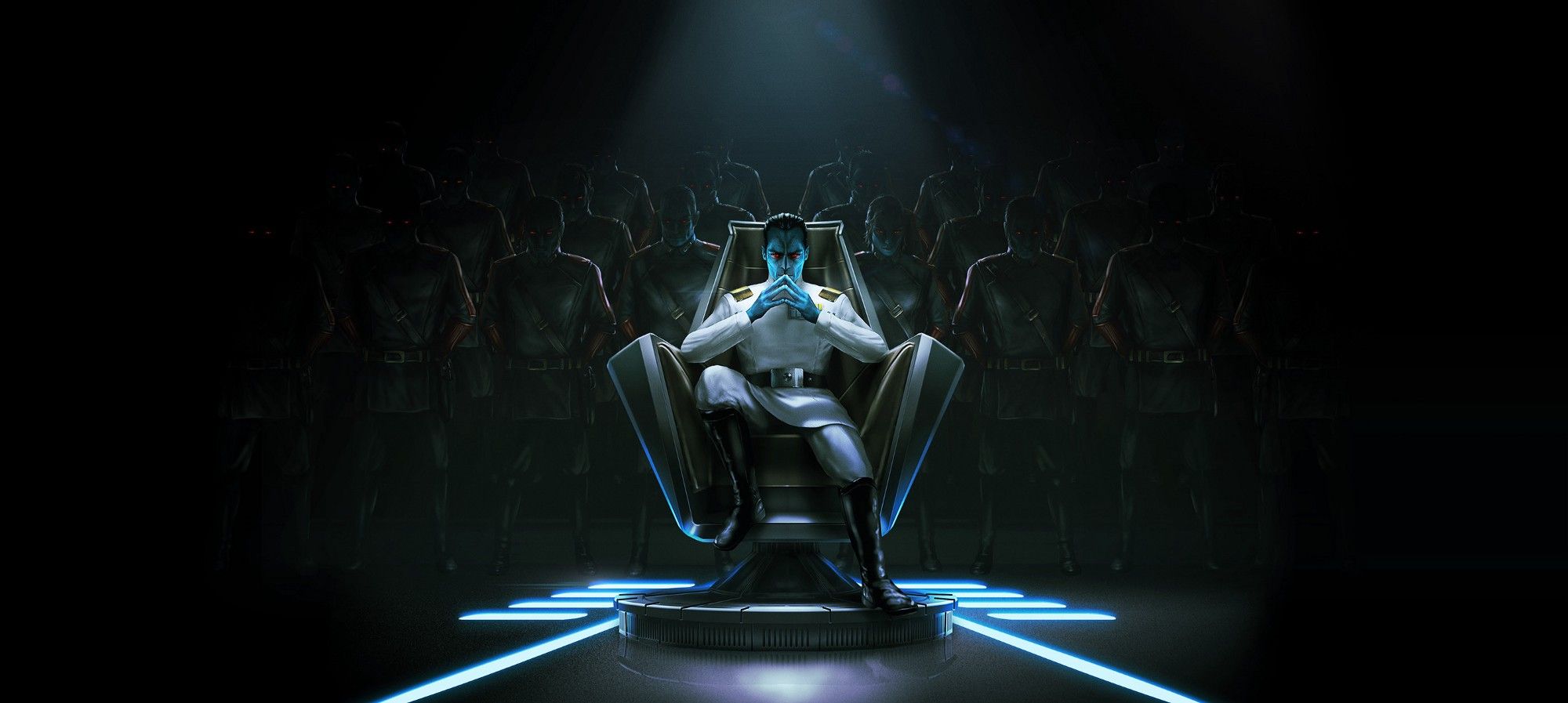
Analysis
The new Thrawn trilogy is…odd. Alliances doesn’t really feel like a sequel to Thrawn, other than the fact that it has Thrawn as a main character. Instead, it’s a follow-up to episodes of Rebels and The Clone Wars, as well as a tie-in to the Galaxy’s Edge theme park attractions. It’s probably the most immediately relevant Zahn Star Wars novel ever, in terms of its integrations with other, non-Zahn Star Wars media. Treason, on the other hand, very much feels like a sequel to both Thrawn and Alliances in about equal measure. Where the first felt like the story of Thrawn, the second and third felt more like stories with Thrawn in them. Taken together though, the three titles do form a cohesive whole, even if they felt a bit disjointed to read as they were released.
Zahn’s take on Darth Vader was a key selling point for Alliances. Considering that the character of Thrawn was invented to contrast against Vader, to function as, in Zahn’s mind, at least, a more compelling villain, what could his Vader bring to a story? Would he be portrayed as a raging brute, as he has seemed in his brief appearances in Zahn’s earlier works? Or, in the process of working him into a story as a main character, would he reconsider Vader in light of the extensive development made in the character since Heir to the Empire was written?
I’d say, it’s a bit of both; Vader is a brute, not because he’s stupid, though. It’s because, unlike Thrawn, he doesn’t need to foster rapport with those under his command. He isn’t a grand tactician, but he is powerful enough to shrug off most sudden contingencies. He actually can just work alone. That said, Zahn does still indict Vader for his self-focussed worldview by highlighting his distrust. In the Clone Wars storyline, Anakin Skywalker readily accepts Thrawn’s aid. In the later storyline, Thrawn repeatedly has to convince Vader to trust his judgment. Vader himself admits that trust is no longer something he values. Overall, the Vader Zahn presents is the Vader that commonly is presented in stories set between Revenge of the Jedi and A New Hope: the bitter, isolated Vader.
As for the statements made about the manifestation of Force ability in Chiss, they were strange, to be sure. I’m not sure how much we can believe about their limitations, given that all we know about “sky walkers” from Alliances is what Thrawn told Vader to assuage his wrath against Jedi and potential Jedi; what we can see of them in Treason indicates that their abilities are more broad than simply being able to navigate hyperspace by intuition during their childhoods. However, I would be surprised if we were to see Chiss Jedi and Sith in the way they were present in the Legends in the new Canon.
The “does he know” intrigue about whether Thrawn could identify Vader as Anakin Skywalker read as fan-baity to me. It didn’t meaningfully affect the story, though it didn’t waste many pages either. I’m sure fans could debate how much Thrawn knows, but compared to the part of Thrawn where he deduces the existence of the Death Star, I don’t think that there’s very much in-universe potential to the idea.
Treason was probably the better of the two sequels, since its story was unified and more developed. It picks up the threads left in the end of Thrawn concerning Thrawn’s disapproval of the Death Star and Eli Vanto’s recruitment by the Chiss military. It also develops the Grysks further. What it doesn’t do is live up to its marketing. Thrawn never commits treason, neither against the Chiss nor against the Emperor. He’s never even much confronted with a chance to. He clearly has divided loyalties, but since the Empire and the Chiss Ascendancy aren’t at odds with each other, he’s never made to take a side. All his double-agent status is shown to do is make him a more effective member of both societies. I spent my entire first read-through wondering if he would betray the Empire or the Chiss, but he did neither.
He did get accused of treason, a lot, but those accusations always came from Brierly Ronan, who was hardly impartial. Ronan was a character who, when he was first being introduced, I disliked. The Thrawn trilogy had thus far leaned heavily on contrasting Thrawn with some other Imperial figure. In the first book, I did like Arhinda Pryce. From my review:
As for Arhinda Pryce:…I enjoyed her chapters; she showed the evil of the Empire beautifully, which was needed in a Thrawn book, certainly, given how charismatic and almost forgivable Thrawn can be in the eyes of the reader. Pryce’s rise to power, which we see in parallel to Thrawn’s, shows how Imperial society rewards the cruel and selfish.
And I liked Zahn’s take on Vader in the second book. But, by the third book, I didn’t feel a need to see a third Imperial being selfish and short-sighted next to Thrawn, who’s playing a masterful long game. And the fact that Ronan seemed particularly stupid at first didn’t seem to help. But as the story went on, it became clear that Ronan isn’t a simple contrast to Thrawn, and by the end, Ronan and Thrawn’s common characteristic is outright stated. They are devoted to the Empire, but they hold the Emperor in contempt. And that made both Ronan and Thrawn work better as characters.
I mentioned in my review of From a Certain Point of View that the Empire exists, paradoxically, as a technologically-minded, highly-bureaucratic society run, ultimately, at the whims of an evil wizard. In the previous two books, Thrawn seems to be the only one to notice that Palpatine isn’t concerned about building a sustainable government or a practical military. The fact that Ronan is there, isn’t an ally of Thrawn’s, but still sees the Emperor for what he is, helps remove the air of “I’m the only competent being in the room” that Thrawn can have in certain stories, as does the fact that Ronan isn’t Thrawn’s friend. He isn’t Eli Vanto, or Karyn Faro, or Gilad Pellaeon (who gets name-dropped at the end of Treason), redeemed by a reverence for Thrawn. All taken, Ronan was really the character this trilogy needed.
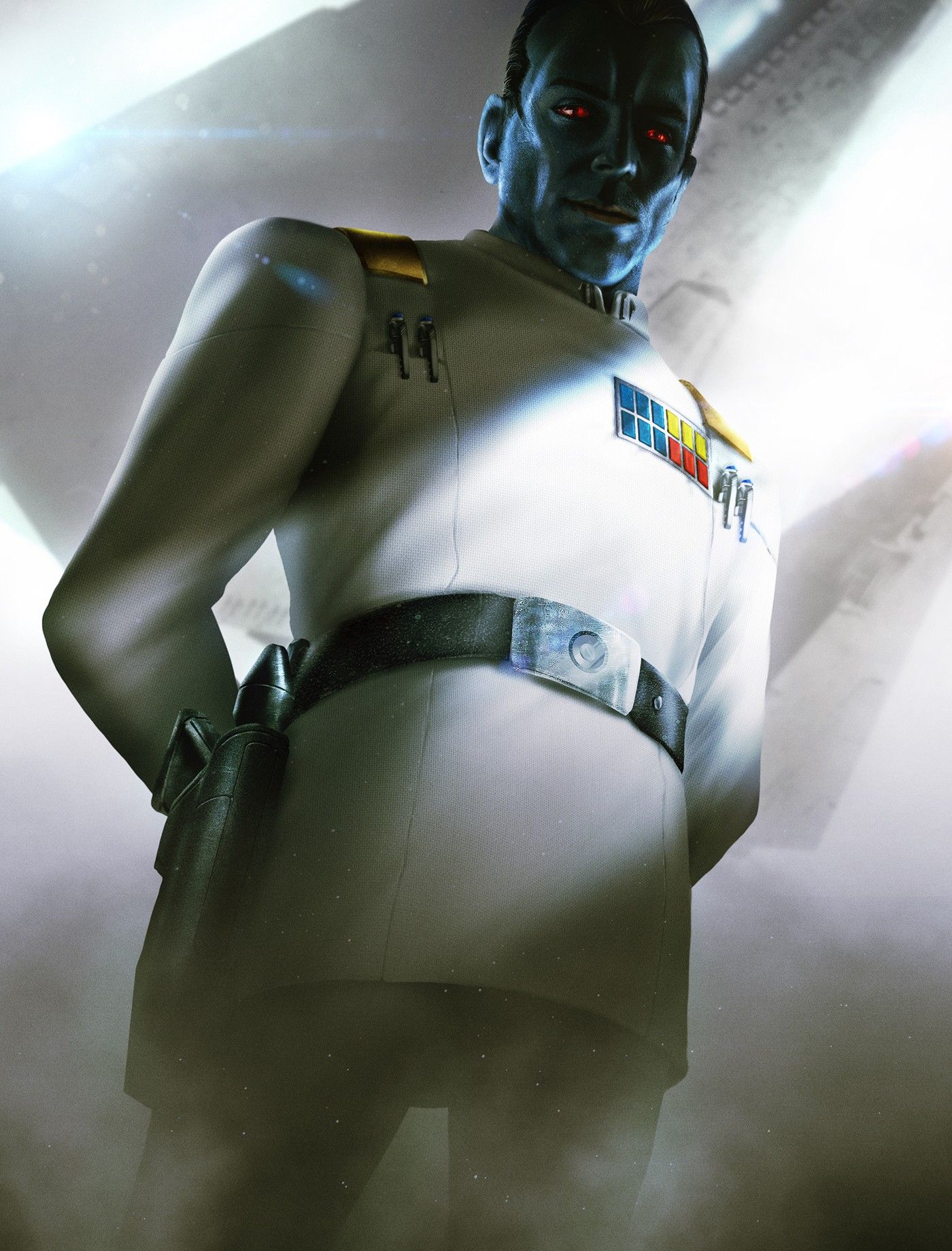
As for Thrawn himself. Zahn has said that he isn’t a different character than the Thrawn from the old EU, but I don’t think that’s quite true; EU Thrawn wasn’t a detective. He was a tactician, an art connoisseur, generally a very intellectual person, yes, but he wasn’t a detective, which canon Thrawn very much is. In both Alliances and Treason Thrawn is tasked as the Emperor’s own personal Sherlock Holmes. This works well, but it is a departure from Thrawn’s earlier appearances.
Thrawn does retain the almost exactly mid-gray morality that he’s had since Outbound Flight. He was more straightforwardly villainous in the original Thrawn Trilogy, and I understand he is in Rebels as well. (I honestly haven’t followed Rebels the way I did Clone Wars. That’s not a statement of how good I think it is, it’s just the fact of the matter.) But in Zahn’s latest two books, he’s always set against other Imperials, or the Grysks, who seem pretty evil. Thrawn is heroic in comparison. Overall, he’s still a villain, and not just because he is in the Imperial military. His vision for a bright future is entirely authoritarian, with a functionally omnipresent military enforcing order throughout the galaxy, and presenting a strong force to incurring foes. In the progression of darkness laid out by Yoda in The Phantom Menace, Thrawn is firmly in the “fear” stage. His driving motivation is fear that, without the Empire’s might to contend with, that the galaxy will fall, to the Grysks or some other threat. Yet he isn’t what I would call malevolent. He is a dutiful, even selfless, warrior at his core.
Speaking of Grysks, it’s a good thing that Thrawn is always speaking vaguely of “Grysks or others” that might threaten the galaxy, because that leaves open the possibility of an invasion by the Yuzhann Vong, or some other race. The Grysks, at least as they’ve been shown so far, aren’t nearly as interesting nor as threatening as the Vong were. Maybe it’s just that we haven’t seen anything from their side, the way we did with the Vong when they were first introduced. Maybe it’s just that the Grysks haven’t thrown a moon at anybody I care about yet. But, from what I’ve seen, I don’t really care if I see more. They functioned in these books, which aren’t really about them.
Oh, one more thing. If the name “Batuu”, the world featured in Alliances, rings any bells, that’s because it’s the in-universe location of the Galaxy’s Edge theme park attractions. The book didn’t really make it seem like a great place to visit, considering in the Clone Wars era, it’s a murder scene, and in the Imperial era, it’s being taken over by Grysks. It’s a weird connection to have made.
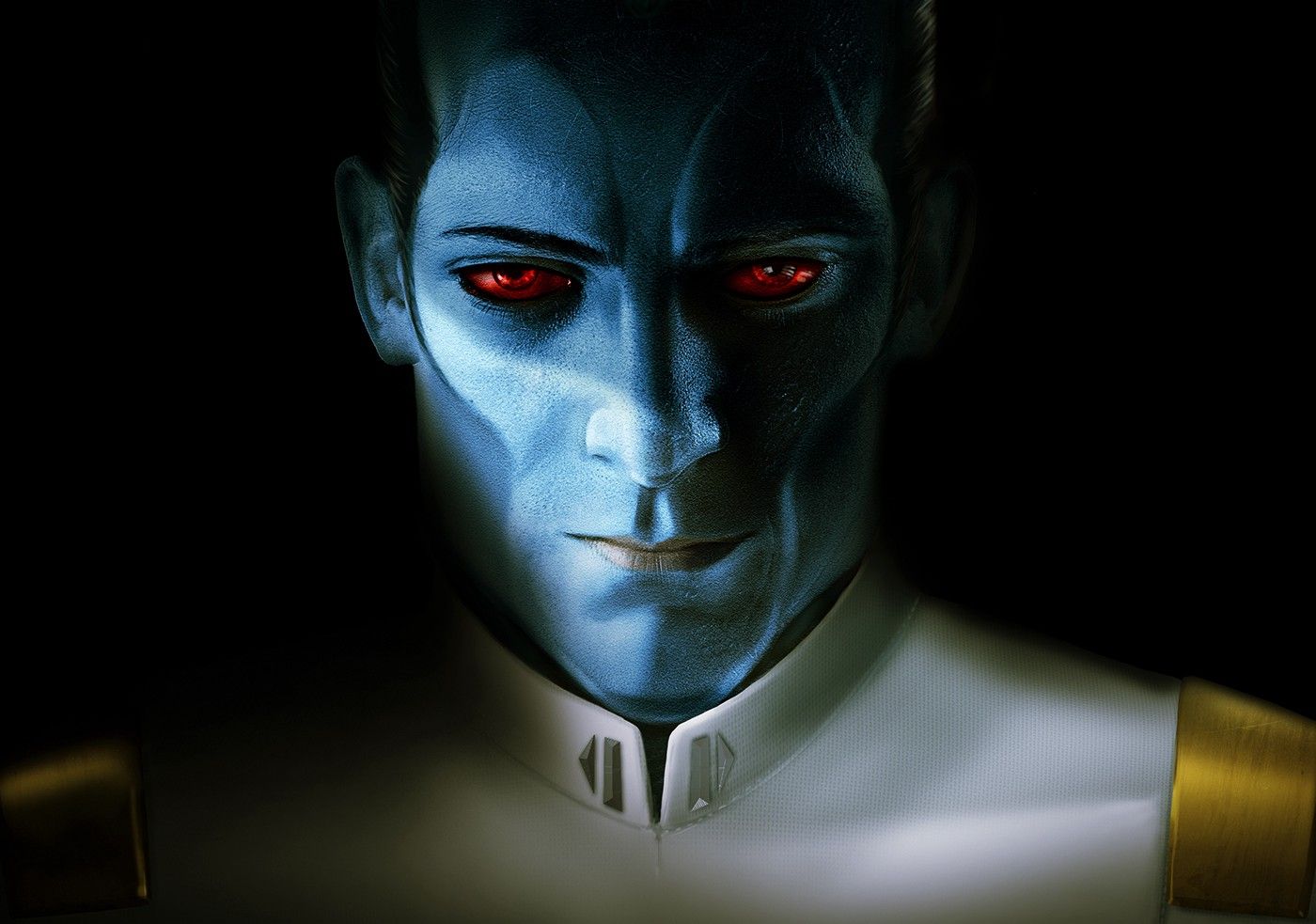
Recommendation and Rating
These books were both fun reads, and both are a good representation of the general trend I’ve noticed in the new Canon of examining the Empire as a source of order in the galaxy, which, once it was gone, was missed enough to give a foot-hold for the rise of the First Order. As with the first book in the series, this is good for Thrawn fans, Rebels fans, and fans of the old EU.
That said, I don’t think either of these are as good as Thrawn. The plot of Alliances wasn’t as rich, and the plot of Treason was a bit convoluted and hard to follow (and hard to synopsize for this piece). So, I’ll give them both
8/10 — Without significant negative worth. Able to be recommended, at full price, without reservation.





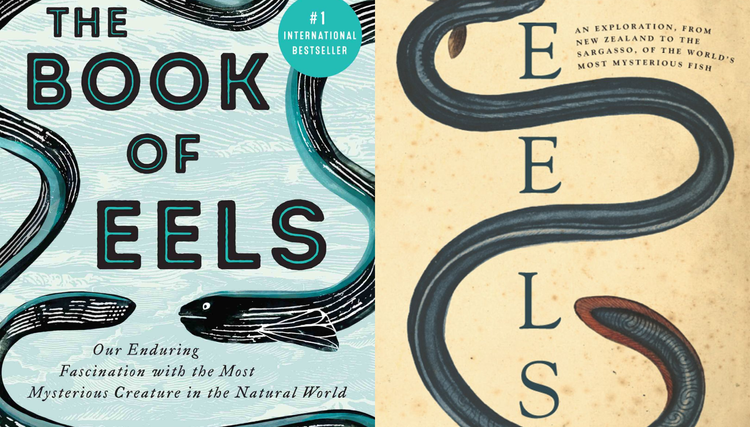
Member Commentary